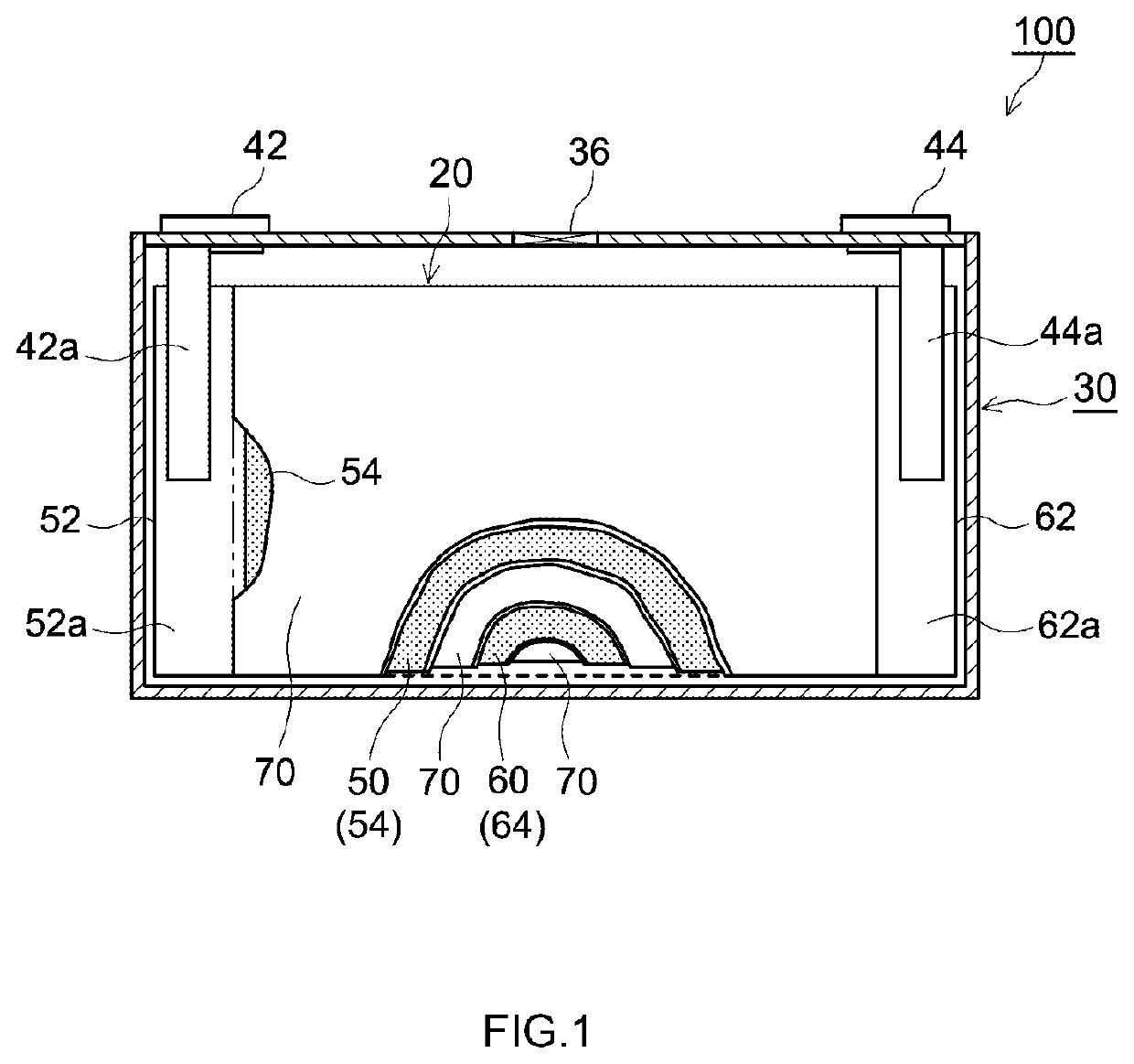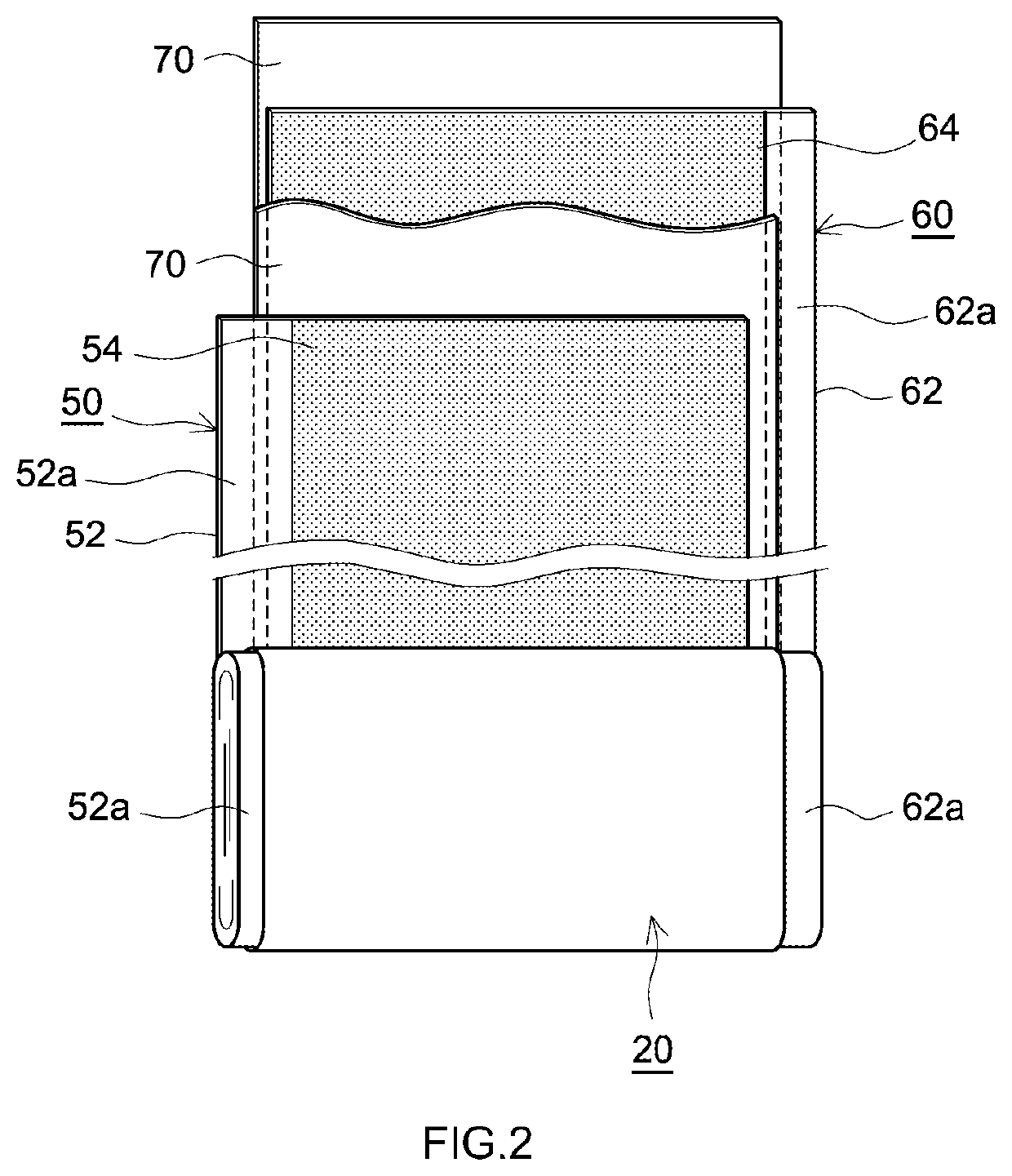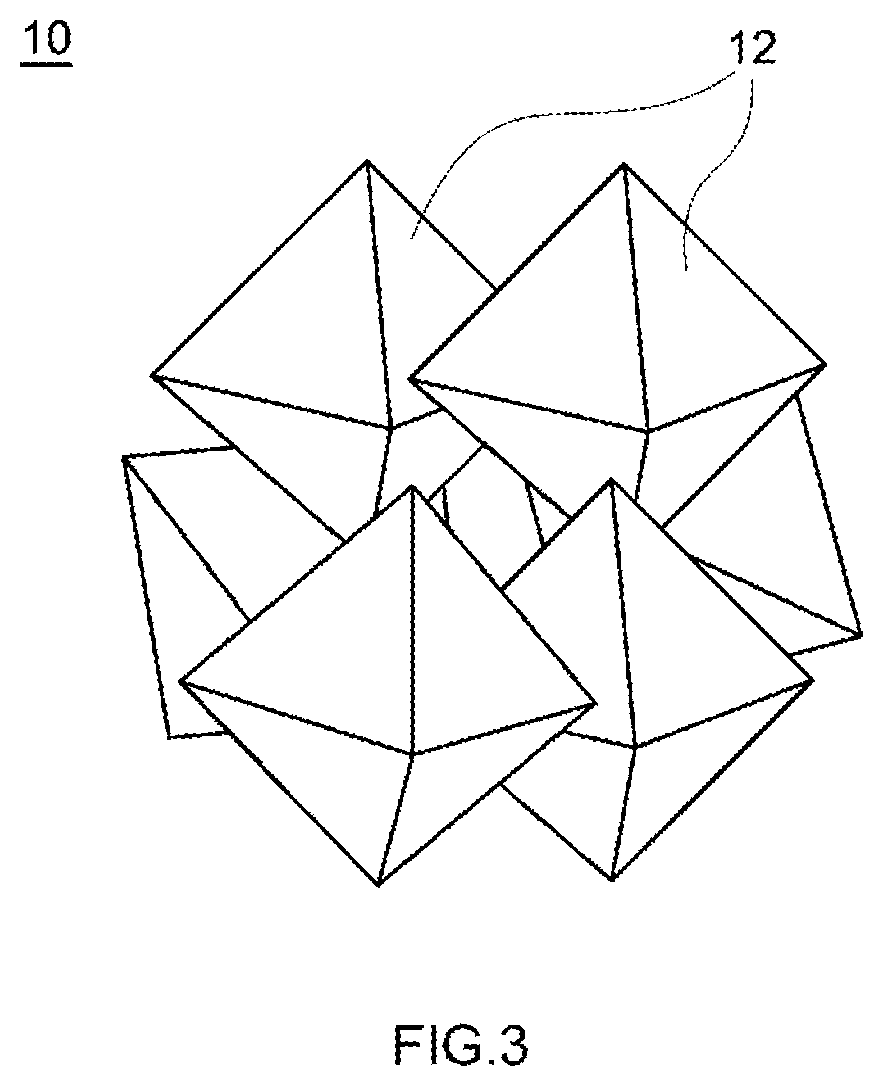Positive electrode active material and secondary battery provided with positive electrode active material
a technology of active materials and secondary batteries, which is applied in the direction of cell components, electrochemical generators, and nickel compounds, etc., can solve the problems of shortened cycle life, easy breakage of active material particles in the pressing step at the time of electrode fabrication and during charging and discharging, and accelerate the deterioration of positive electrode active materials, etc., to achieve excellent capacity deterioration resistance, excellent effect of reducing initial resistance and resistance increase ra
- Summary
- Abstract
- Description
- Claims
- Application Information
AI Technical Summary
Benefits of technology
Problems solved by technology
Method used
Image
Examples
examples 1 and 2
[0071]Manganese sulfate was dissolved in ion-exchanged water, and an aqueous manganese sulfate solution was prepared so as to have a predetermined concentration. In addition, a sodium hydroxide aqueous solution and an ammonia aqueous solution were prepared using ion-exchanged water.
[0072]The ion-exchanged water was stirred while being kept within the range of 30° C. to 60° C., and adjusted to a predetermined pH (pH 10 to 13) by using the sodium hydroxide aqueous solution. Then, a coprecipitation product (hydroxide) was obtained by adding the above-mentioned manganese sulfate aqueous solution, sodium hydroxide aqueous solution and ammonia aqueous solution while controlling the predetermined pH. The obtained hydroxide was filtered, washed with water, and then dried in an oven at 120° C. to obtain a hydroxide powder (positive electrode active material precursor powder). The ion-exchanged water used herein was used after the dissolved oxygen was removed by passing an inert gas therethro...
examples 3 to 11
[0097]In the method for producing the positive electrode active material of Examples 1 and 2 described above, a step of forming a composite hydroxide layer on the surface of the hydroxide was added after the coprecipitation product (hydroxide) was obtained.
[0098]That is, manganese sulfate and nickel sulfate were dissolved in ion-exchanged water, and a mixed aqueous solution of manganese sulfate and nickel sulfate was prepared so as to have a predetermined concentration. At this time, the amount of nickel atoms contained in the composite hydroxide layer was changed by adjusting the molar ratio of nickel atoms to manganese atoms.
[0099]After the co-precipitation product (hydroxide) was obtained, the sodium hydroxide aqueous solution, ammonia aqueous solution and mixed solution were added, while controlling a pH different from the predetermined pH in the step of obtaining the hydroxide (however, within the range of pH 10 to 13), to obtain a composite hydroxide in which a composite hydro...
example 12
[0102]The procedure was the same as in Examples 3 to 11, except that aluminum hydroxide powder was further added when the composite hydroxide powder and lithium hydroxide powder were mixed, and the molar ratios of Li, Ni, Al, and Mn were set to predetermined values (see the average chemical composition of Example 12 in Table 2).
PUM
| Property | Measurement | Unit |
|---|---|---|
| particle diameter | aaaaa | aaaaa |
| particle diameter | aaaaa | aaaaa |
| particle diameter | aaaaa | aaaaa |
Abstract
Description
Claims
Application Information
 Login to View More
Login to View More - R&D
- Intellectual Property
- Life Sciences
- Materials
- Tech Scout
- Unparalleled Data Quality
- Higher Quality Content
- 60% Fewer Hallucinations
Browse by: Latest US Patents, China's latest patents, Technical Efficacy Thesaurus, Application Domain, Technology Topic, Popular Technical Reports.
© 2025 PatSnap. All rights reserved.Legal|Privacy policy|Modern Slavery Act Transparency Statement|Sitemap|About US| Contact US: help@patsnap.com



